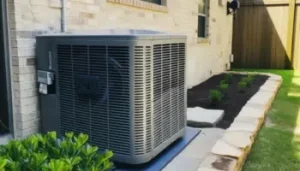Understanding SEER (Seasonal Energy Efficiency Ratio) ratings is crucial when choosing the right HVAC system for your home. SEER ratings significantly determine your heating and cooling system’s efficiency, impacting your comfort and energy bills. This guide delves into SEER ratings, why they matter, and how selecting a higher SEER-rated unit can lead to long-term cost savings.
What are SEER Ratings?
SEER ratings measure the efficiency of air conditioners and heat pumps. Essentially, SEER indicates how much cooling output an HVAC system delivers for each unit of energy it consumes over an entire cooling season. The higher the SEER rating, the more efficient the system is at converting energy into cooling power.
How to Read SEER Ratings
SEER ratings are represented by a numerical value, typically ranging from 13 to 25. Here’s what you need to know about interpreting SEER ratings:
Higher Rating = Greater Efficiency: As mentioned earlier, higher SEER ratings indicate greater energy efficiency. For example, a system with a SEER rating of 20 is more efficient than one with a SEER rating of 15.
Minimum Efficiency Standards: The U.S. Department of Energy sets minimum SEER requirements for new HVAC systems. Currently, the minimum SEER rating for air conditioners is 14, while heat pumps must have a minimum SEER rating of 14 in cooling mode.
Cost Considerations: While higher SEER-rated units are more efficient, they often come with a higher upfront cost. However, the long-term energy savings can offset the initial investment.
Why SEER Ratings Matter
Understanding SEER ratings is essential for several reasons:
1. Energy Efficiency
SEER ratings directly correlate with energy efficiency. A higher SEER-rated unit consumes less energy to produce the same amount of cooling compared to a lower SEER-rated unit. This means you can stay comfortable while reducing your energy consumption and lowering your utility bills.
2. Environmental Impact
Choosing a high-efficiency HVAC system with a higher SEER rating can also reduce your carbon footprint. By consuming less energy, you’ll decrease your home’s greenhouse gas emissions, contributing to environmental sustainability.
3. Long-Term Cost Savings
While high-efficiency HVAC systems may have a higher initial cost, they offer significant long-term savings. Lower energy bills over the system’s lifespan can offset the upfront investment, making higher SEER-rated units a financially sound choice in the long run.
4. Enhanced Comfort
High-efficiency HVAC systems save energy and provide better comfort and humidity control. They can maintain more consistent indoor temperatures and reduce hot and cold spots in your home, leading to improved comfort year-round.
5. Rebates and Incentives
Many utility companies and government agencies offer rebates and incentives for installing high-efficiency HVAC systems. These incentives can offset the upfront cost of purchasing a system with a higher SEER rating, making upgrading even more affordable.
How to Choose the Right SEER Rating for Your Home
When selecting an HVAC system, it’s essential to consider factors such as your climate, budget, and long-term goals. Here are some tips for choosing the right SEER rating for your home:
Assess Your Climate: In hotter climates where air conditioning is used frequently, opting for a higher SEER-rated unit can lead to greater energy savings. In cooler climates, a lower SEER rating may suffice.
Consider Your Budget: While higher SEER-rated units offer greater efficiency, they often come with a higher upfront cost. Determine your budget and weigh the initial investment against long-term energy savings.
Calculate Potential Savings: Use online calculators or consult with HVAC professionals to estimate the potential energy savings of upgrading to a higher SEER-rated unit. This can help you make an informed decision based on your specific circumstances.
Research Rebates and Incentives: Check with your utility company or local government to see if there are any rebates or incentives available for installing a high-efficiency HVAC system. These incentives can make upgrading to a higher SEER-rated unit more affordable.
Consult with HVAC Professionals: HVAC professionals can assess your home’s cooling needs, recommend the appropriate SEER rating, and help you select the right HVAC system for your budget and preferences.
Conclusion
SEER ratings play a crucial role in determining the efficiency of your HVAC system and can significantly impact your comfort and energy bills. By understanding SEER ratings, homeowners can make informed decisions when selecting an HVAC system, choosing the right SEER rating for their needs, budget, and long-term goals. Investing in a high-efficiency HVAC system with a higher SEER rating can lead to substantial energy savings, environmental benefits, and enhanced comfort for years to come.
At Diamond Heating & Cooling, we specialize in providing high-quality HVAC solutions tailored to your home’s specific needs. Contact us today to learn more about SEER ratings and how upgrading to a high-efficiency HVAC system can benefit your home.



